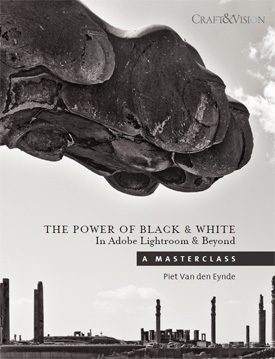
The Power of Black & White in Adobe Lightroom
The Power of Black & White in Adobe Lightroom & Beyond, (A Master Class) by Piet Van den Eynde is a massive eBook – 100 pages of information – on professional black and white photo post-processing. The author does a great job of explaining each step of the process down to the smallest detail – and the results are impressive to say the least.
This eBook explores the black and white conversion options that Adobe Lightroom has to offer. Almost all of these techniques work also in Adobe Camera Raw, which shares the same processing engine as Lightroom. It also discusses certain useful plugins and how you can incorporate High Dynamic Range techniques into your black-and-white post-processing.
This is a true technical master class that will keep you busy for a while. The photo examples are simply stunning and the case studies walk you through the whole process from the digital camera original to the polished final result.
Topics Covered:
- Introduction
- Digital Black and White Dos & Don’ts
- The Basics of Black & White Conversion
- Introducing Lightroom’s Black and White Conversion Tools
- Case Study 1: The Endless Possibilities of the Black & White Adjustment Panel
- Lightroom Black & White Workflow
- Case Study 2: Making the Most of an All-but-perfect Original
- Case Study 3: With a little help from my (Photoshop) Friends
- Pros and Cons of Using Presets
- Dodging and Burning with Graduated Filters and the Adjustment Brush
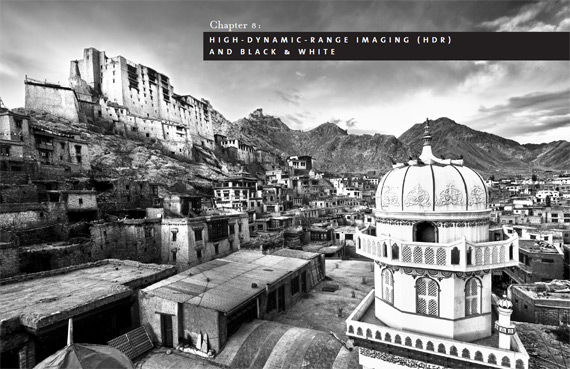
The Power of Black & White in Adobe Lightroom & Beyond
- Lightroom Plugins for Black & White Conversion
- Alien Skin Exposure Plugin
- Nik Silver Efex Pro 2 Plugin
- High-Dynamic-Range Imaging (HDR) and Black & White
- Nik HDR Efex Pro Plugin
- Photomatix Pro Plugin for Lightroom
- LR/Enfuse Plugin
- The Finishing Touches
- Tinting and Toning
- Tinting with the Split Toning Panel
- Selective Colouring Using the HSL Panel
- Hand Tinting and Photograph
- Adding an Old-School Film Border
- A Border With a Personal Touch
- The Print
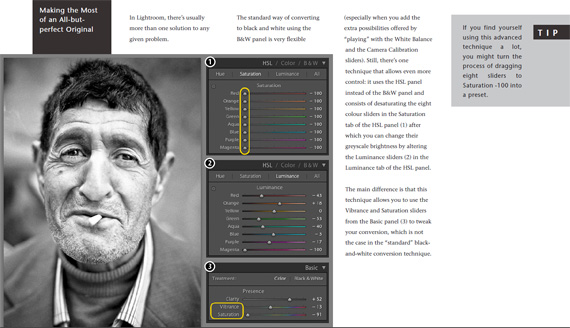
The Power of Black & White in Adobe Lightroom & Beyond
Van den Eynde says “In a digital world, where colour abounds, black and white almost seems like an anachronism. For a long time, digital monochrome was a no-go zone, only to be entered at your own risk. It was the playground of digital alchemists who mixed channels in Photoshop and printed their work on a colour printer that they had custom-converted into a dedicated black and white machine that ran on specialty quadtone inks. More than knowledge of photography, you needed a degree in math, chemistry, or preferably both to achieve even halfway decent black and white results. That was then, this is now: the last five years have brought tremendous progress, both in hardware and in software.”
Like This Article?
Don't Miss The Next One!
Join over 100,000 photographers of all experience levels who receive our free photography tips and articles to stay current:

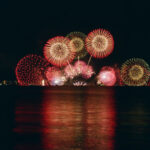
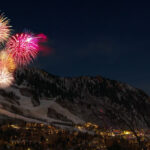
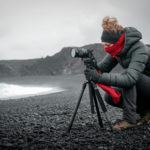

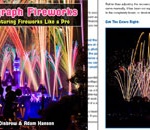
Leave a Reply